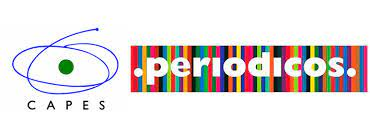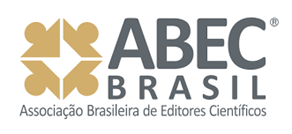PROPOSAL FOR TEACHING THE STIRLING CYCLE BRINGING TOGETHER TWO HEAT ENGINES IN THE PERSPECTIVE OF REPRESENTATIONAL MULTIMODALITY WITH FORMATIVE ASSESSMENT
DOI:
https://doi.org/10.22407/2176-1477/2023.v14.2237Keywords:
High School, multimodal integration of representations, low-cost experiments, educational product in thermodynamics, P-V diagram instructionAbstract
In the teaching of thermodynamics, several studies argue that it is pedagogically useful to discuss the Stirling cycle through didactic heat engines, which may be prior to approaching the Carnot cycle. One of the reasons comes from the proliferation of simple and affordable versions of these machines that are within reach in the school environment with the feasibility of experimental activities related to the Stirling cycle in a real classroom situation. Considering such relevance of the Stirling cycle in this context, the present work aims to contribute with an educational proposal to facilitate qualitative understandings of the related P-V diagram while illustrating characteristics of a heat engine, and which can be a useful alternative in high school education to the interested teacher. The proposal brings together two versions of didactic Stirling cycle heat engines, which are portable and low-cost assemblies commonly disclosed in videos on Youtube, establishing a methodology based on the reference of representational multimodality as an instructional aid to the desired interpretation of the P-V diagram. Still in this methodology, it is proposed to include a challenge through one of these versions of the heat engine in the form of formative assessment, in order to enrich the reflection with the learners after an initial instruction directed by the other version, allowing the educator to analyze and monitor the performance of students as well as reinforce the desired understandings.
References
ASSIS, A.; AMORIM, C.; CARVALHO DE, F. O uso do motor Stirling no ensino da Termodinâmica: uma estratégia metodológica. Enseñanza de las ciências. Número Extra. VIII Congreso Internacional sobre Investigación en Didáctica de las Ciencias, Barcelona, pp. 218-222 (2009). Disponível em: <https://raco.cat/index.php/Ensenanza/article/view/293449/381976>. Último acesso: 11 de maio de 2022.
COSTA, R. C. M.; MARTINS, E. D.; FELIX, N. M. AVALIAÇÃO INSTITUCIONAL DO ENSINO-APRENDIZAGEM. 1ª Edição. Sobral: Editora Aiamis, 2017. Disponível em:< https://md.uninta.edu.br/geral/pos-graduacao/pedagogia/avaliacao_institucional_do_ensino_aprendizagem/AVALIA%c3%87%c3%83O%20INSTITUCIONAL%20DO%20ENSINO%20APRENDIZAGEM-ACE.pdf>. Ùltimo acesso em 2 de agosto de 2021.
DEACON, Christopher, G.; GOULDING, C Haridanss; DE YOUNG, Brad. Demonstration experiments with a Stirling engine. Physics Education, v. 29, p. 180-183, 1994. Disponível em: https://iopscience.iop.org/article/10.1088/0031-9120/29/3/013/pdf. Último acesso: 17 de maio de 2022.
DICKERSON, Robert H.; MOTTMANN, Jochen. The Stirling cycle and Carnot’s theorem. European Jounal Physics, v. 40, p. 1-14, 2019. Disponível em: https://iopscience.iop.org/article/10.1088/1361-6404/ab3532/pdf. Último acesso: 20 de maio de 2022.
DUVAL, R. Semiosis y pensamiento humano: registros semióticos y aprendizajes intelectuales. Universidad del Vale, Instituto de Educación y Pedagogía (Colômbia): Editora Santiago de Cali, 2004. Disponível em: https://www.scienceopen.com/document?vid=171dcd43-7a1d-4e9e-b717-77febb4547a1. Último acesso: 13 de junho de 2013.
FERNANDES, D. Para uma teoria da avaliação formativa. Revista Portuguesa de Educação, v. 19, n. 2, ps. 21-50, 2006. Disponível em: < https://repositorio.ul.pt/bitstream/10451/5495/1/Para%20uma%20teoria%20da%20avaliac%CC%A7a%CC%83o%20formativav19n2a03%283%29.pdf>. Último acesso: 2 de agosto de 2021.
GASPAR, Alberto. Física – Ondas, Óptica e Termodinâmica. São Paulo: Editora Ática, 2000.
KELLER, F. J.; GETTYS, W. E.; SKOVE, M. J. Física – Volume 1. São Paulo: Makron books do Brasil Editora Ltda, 1999.
HALLIDAY, David; RESNICK, Robert; WALKER, Jearl. Fundamentos de física (Gravitação, Ondas e Termodinâmica). Volume 2, 8ª ed. Rio de Janeiro, RJ: LTC, 2009.
LABURÚ, Carlos Eduardo; SILVA, Osmar Henrique Moura da. O laboratório didático a partir da perspectiva da multimodalidade representacional. Ciência & Educação, v. 17, n. 3, p. 721-734, 2011a. Disponível em: http://old.scielo.br/pdf/ciedu/v17n3/a13v17n3.pdf. Último acesso: 13 de junho de 2022.
LABURÚ, Carlos Eduardo; SILVA, Osmar Henrique Moura da. Mutimodos e múltiplas representações: fundamentos e perspectivas semióticas para a aprendizagem de conceitos científicos. Investigações em Ensino de Ciências, v. 16, n. 1, p. 7-33, 2011b. Disponível em: file:///C:/Users/Usuario/Downloads/244-478-1-SM%20(1).pdf. Último acesso: 13 de junho de 2022.
LEE, J. F.; SEARS, F. W. Termodinâmica. Rio de Janeiro: Ao Livro Técnico S. A., 1969.
LU, Y. J.; NAKAHARA, Hiroko; BOBOWSKI, J. S. Quantative Stirling Cycle Measurements: P-V Diagram and Refrigeration. Science Education, v. 4, p. 1-7, nov. 2018. Disponível em: https://arxiv.org/pdf/1812.04415.pdf. Último acesso: 18 de maio de 2022.
MARTINEZ, YULY A. G.; VARGAS, YULY H. R. Enseñanza para la comprensión y trabajos prácticos: Estrategia de aula para la aproximación al ciclo de Stirling. Revista Científica, Edición especial, p. 69-79, enero de 2017, Bogotá, D.C. Disponível em: https://go.gale.com/ps/i.do?id=GALE%7CA500224003&sid=googleScholar&v=2.1&it=r&linkaccess=abs&issn=01242253&p=IFME&sw=w&userGroupName=uel_br. Último acesso: 17 de maio de 2022.
MORTIMER, E. F.; SCOTT, P. Atividade discursiva nas salas de aula de ciências: uma ferramenta sociocultural para analisar e planejar o ensino. Investigações em Ensino de Ciências. V. 7, n. 3, p. 283-306, 2002. Disponível em: . Último acesso: 23 de agosto de 2021.
MÜLLER, André H. T.; ALVARENGA, Flávio G.; LOYOLA, Gustavo V. Estudo das primeira e segunda leis da termodinâmica com o emprego de experimentos e um motor Stirling. Experiências em Ensino de Ciências, v. 14, n. 3, 2019. Disponível em: https://if.ufmt.br/eenci/artigos/Artigo_ID658/v14_n3_a2019.pdf. Último acesso: 20 de maio de 2022.
PEDROCHI Jr., O. Avaliação Formativa como Condutora da Prática docente. XXI EBRAPEM (Encontro Brasileiro de Estudantes de Pós-graduação em Educação Matemática). Pelotas – RS, 2 a 4 de novembro de 2017. Disponível em: <https://wp.ufpel.edu.br/xxiebrapem/files/2018/10/gd8_osmar_pedrochijunior.pdf>. Último acesso: 23 de agosto de 2021.
PRAIN, Vaughan.; WALDRIP, Bruce. An exploratory study of teachers’ and students’ use of multi-modal representations of concepts in primary science. International Journal of Science Education, Abingdon, v. 28, n. 15, p. 1843-1866, 2006. Disponível em: https://www.tandfonline.com/doi/abs/10.1080/09500690600718294. Último acesso: 13 de junho de 2022.
RADFORD, L.; EDWARDS, L.; ARZARELLO, F. Introduction: beyond words. Educational Studies in Mathematics, Dordrecht, v. 70, n. 2, p. 91-95, 2009. Disponível em: file:///C:/Users/Usuario/Downloads/Introduction.pdf. Último acesso: 13 de junho de 2022.
SAVALL-ALEMANY, F.; ESPARZA-GARCIA, M.; ALVAREZ-HERRERO, J. F.; ROSA-CINTAS, S. Determinación del rendimento de un motor de Stirling usando Arduino: una propuesta para la enseñanza de la termodinâmica en los cursos introdutórios. Revista Brasileira de Ensino de Física, v. 42, e20200279, 2020. Disponível em: https://www.scielo.br/j/rbef/a/tbh3pMq3gBmW3yG6vCnZwfN/?format=pdf&lang=es. Último acesso: 19 de maio de 2022.
SILVA, O. H. M.; LABURÚ, C. E. Um encaminhamento didático fundamentado na formulação de perguntas como auxílio ao processo educacional de medição. Revista Brasileira de Pesquisa em Educação em Ciências. V. 13, p. 195-213, 2013. Disponível em: . Último acesso: 23 de agosto de 2021.
TYLER, Russell; PRAIN, Vaughan; PETERSON, Suzanne. Representational issues in students learning about evaporation. Research in Science Education, Dordrecht, v. 37, n. 3, p. 313-331, 2007. Disponível em: https://link.springer.com/content/pdf/10.1007/s11165-006-9028-3.pdf. Último acesso: 13 de junho de 2022.
VICARI, MATHIAS V.; CARVALHO, ALEXANDRE T. G. O ensino da termodinâmica no ensino médio em uma abordagem investigativa desenvolvida em torno do motor de Stirling. XXIII Simpósio Nacional de Ensino de Física – SNEF. De 27 de janeiro a 01 de fevereiro de 2019 - Salvador – BA (2019). Disponível em: https://www.posensinofisica.ufv.br/wp-content/uploads/2012/02/T0664-1.pdf. Último acesso em 12 de maio de 2022.
WALKER, Jearl. The amateur scientist: A backyard version of a Stirling engine can be built with common materials. Scientific American, v. 262, n. 1, pp. 140-145, jan. 1990. Disponível em: https://www.jstor.org/stable/24996653?seq=5. Último acesso: 6 de junho de 2022.
WANG, Kai; SANDERS, Seth R; DUBEY, Swapnil; CHOO, Fook Hoong; DUAN, Fei. Stirling cycle engines for recovering low and moderate temperature heat: A review. Renewable and Sustainable Energy Reviews, v. 62, ps. 89-108, 2016. Disponível em: https://www.sciencedirect.com/science/article/pii/S136403211630048X. Último acesso: 28 de maio de 2022.
ZHU, Lilin; XIANG, Gang. Investigating student understanding of a heat engine: a case study of a Stirling engine. Physics Education, 57, 01511, jan. (2022). Disponível em: https://iopscience.iop.org/article/10.1088/1361-6552/ac342b/meta. Último acesso: 18 de maio de 2022.
Downloads
Published
How to Cite
Issue
Section
License
Copyright (c) 2023 OSMAR HENRIQUE MOURA SILVA

This work is licensed under a Creative Commons Attribution-NonCommercial 4.0 International License.
O autor responsável pela submissão representa todos os autores do artigo, e se compromete a enviar como documento suplementar uma carta de consentimento com a assinatura de todos os autores informando que tem a permissão para a submissão do texto assim como assegura que não há violação de direitos autorais e nem qualquer tipo de plágio (incluindo autoplágio).









